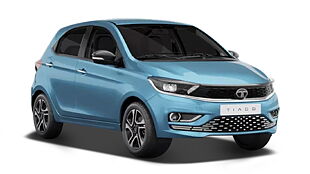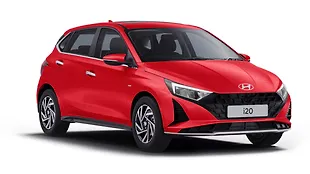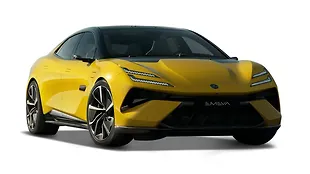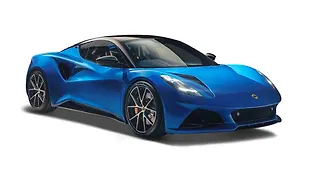What is it?

Yet another dashboard camera you might say. But Transcend says it's more than just a safety device and is in fact, a fellow traveller ready to explore more of the world with you. Well, we will ascertain that with its use over the coming months. For now, let's introduce it to you. This is Transcend's DrivePro 230 dashcam that uses a Sony image sensor to capture high-resolution videos. And it does that with extremely fine tonal gradation even in low light. What's more, it features a built-in battery, Wi-Fi connectivity, a GPS/GLONASS receiver and even a handy snapshot button. But before we get to that and its working in detail, let's see what's in the package and how to install this device.

What's in the box?

The DrivePro 230 dashcam unit comes neatly packed in a box along with a car mount, an adapter with a 3.5m long cable, a warranty card and a quick start guide. Interestingly, Transcend is also providing a 16GB microSD memory card, which usually needs to be bought separately with other dashcams. One can opt for a higher capacity one too as the device supports cards up to 128GB.

How to install it?

Now for the installation. The device is compact, lightweight and fits in your palm. To give you a perspective, it's smaller than your regular soap bar. And even if its surface is nice and smooth, it won't slip out of your hand like a wet soap bar. You can also pair it with the mount supplied for better grip. The bracket on the mount slides into the slot on top of the device. Slide it till there's a click to ensure it’s secured firmly. Insert the SD card in the device next along with the power cord.

The suction mount isn't any different from the other mounts and sticks to the glass like a slug. Things till here are hassle-free as you can find a centre top spot (preferably near the internal mirror) on the front windscreen for mounting this device. Position it in such a way that it covers a large area of the view ahead. Now, carefully route the long cable upwards and slide it inside the gap between the wind-screen. This cable is long enough to reach the 12V socket in the car’s centre console. Just make sure it doesn't get entangled while doing it. Start the ignition of the car and plug the adapter in. The device will automatically boot up and start recording. Date and time needs to be set on first use and hereon it remembers thanks to its internal battery.

What will it be used for?

By now you must have realised that the dashcam will be on as long as the ignition of the car is on or power is being supplied to the device's port. Meaning, it will automatically start up and record videos when the car is on. The primary function of this unit is to record footage that can serve as the purpose of proof of any incident due to the nuisance of careless drivers or fearless pedestrians. Now, this also doubles up in capturing memories on a scenic drive.
What's more, the Sony high-sensitivity image sensor ensures high quality footage even at night. We will get into the intricate details of this in our next report. Also, the built-in GPS/GLONASS receiver logs your driving path, while the built-in Wi-Fi function can be used for live streaming on your smartphone through the DrivePro app. The device also features parking mode and time-lapse video to safeguard your vehicle 24X7. Other than that, there's Lane Departure Warning System (LDWS) to help prevent accidents and even Forward Collision Warning System (FCWS) to help maintain a safe distance.
Next update?
First impressions are great. Still, we shall be using this device for quite some time to know more about its features, ease of use and even durability. We will also pair it with the smartphone on the go and finally check out if the DrivePro Toolbox software is any good. Stay tuned to know more about the pros and cons of this device.
Pictures by Kaustubh Gandhi

Specifications
Dimensions - 70.2mm × 63.1mm × 34.5mm
Weight - 81g
Display Type and Size 2.4-inch color LCD Lens F/2.0, 130° wide angle
Power Supply - Input: DC 12V~24V Output: DC 5V 1A
Video Formats - H.264 (MOV: up to 1920x1080 30fps)
Operating Temperature - -20°C (-4°F) ~ 65°C (149°F)
Certificates - CE, FCC, BSMI, KC, NCC, MIC

![Maruti Suzuki Swift [2018-2021] Image Maruti Suzuki Swift [2018-2021] Image](https://imgd.aeplcdn.com/272x153/n/cw/ec/26742/swift-exterior-right-front-three-quarter-2.jpeg?q=80)
![Maruti Suzuki Swift [2018-2021] Right Front Three Quarter Maruti Suzuki Swift [2018-2021] Right Front Three Quarter](https://imgd.aeplcdn.com/199x112/n/cw/ec/26742/swift-exterior-right-front-three-quarter-2.jpeg?q=80)
![Maruti Suzuki Swift [2018-2021] Right Side View Maruti Suzuki Swift [2018-2021] Right Side View](https://imgd.aeplcdn.com/199x112/n/cw/ec/26742/swift-exterior-right-side-view.jpeg?q=80)
![Maruti Suzuki Swift [2018-2021] Right Rear Three Quarter Maruti Suzuki Swift [2018-2021] Right Rear Three Quarter](https://imgd.aeplcdn.com/199x112/n/cw/ec/26742/swift-exterior-right-rear-three-quarter.jpeg?q=80)
![Maruti Suzuki Swift [2018-2021] Dashboard Maruti Suzuki Swift [2018-2021] Dashboard](https://imgd.aeplcdn.com/199x112/n/cw/ec/26742/swift-interior-dashboard.jpeg?q=80)
![Maruti Suzuki Swift [2018-2021] Steering Wheel Maruti Suzuki Swift [2018-2021] Steering Wheel](https://imgd.aeplcdn.com/468x263/n/cw/ec/26742/swift-interior-steering-wheel.jpeg?q=80)


























